Written by Eden Roquelaire for Twin Peaks Freaks.
Judy is an enigmatic character, and a point of extreme interest for some die-hard Twin Peaks fans. Researchers have managed to uncover her original identity as Josie Packard’s sister and Phillip Jeffries’ informant, but is Judy more than just a character cut out of Fire Walk With Me for time? There are still many unanswered questions about her: For one, why does the monkey whisper her name? And how does she know about the existence of the Black Lodge? I have a theory that may explain this, and reveal the true face, or faces, of Judy. This theory also indicates that we have actually seen Judy much more than we originally thought. Let’s start with this quote from Inland Empire:
My friend Nico, who lives in Pomona has a blonde wig. She wears it at parties. But she’s on hard drugs and turning tricks now. She looks very good in her blonde wig just like a movie star. Even girls fall in love with her when she’s looking so good in her blonde star wig. She blows kisses and waves. But she has got a hole in her vagina wall. She has torn a hole into her intestine from her vagina. She has seen a doctor, but it is too expensive. And now she knows her time has run out. She [will] score a few more times, and then, like that, she will stay at home, with her monkey. She has a pet monkey. This monkey shits everywhere, but she doesn’t care! This monkey can scream. It screams like it in a horror movie. But there are those who are good with animals; who have a way with animals.
-“Street Person #2” (Nae), Inland Empire
Right off the bat, we can say that Judy and Nico have two things in common: 1) We know very little about them, but 2) we know they are both associated with monkeys, for whatever reason. That may not be much to go on, but the monkey connection is a strange enough one to merit some further rumination.
So, who is Nico? According to her friend, she is a woman who turned to prostitution and drugs, but because of a perforation in her vagina wall, she will now live at home, with her pet monkey. Oh, and she wears a blonde wig, which makes her look “just like a movie star.” She is so beautiful, both men and women fall in love with her. It’s difficult to tell from the only shot we get of Nico, but the actress who plays her, Masuimi Max, is of Korean descent, which makes both Nico and Judy Asian.
But who is Judy? Thanks to some very loyal Twin Peaks fans, we have more info on Judy: She’s allegedly Josie Packard’s sister, an informant and possible love interest to Phillip Jeffries, and she seems to know something about a portal to the Black Lodge that exists in Buenos Aires. Through Josie, she may also be linked to prostitution. And a monkey mysteriously whispers her name in Twin Peaks: Fire Walk With Me.
But what, if anything, does this mean?
Judy was meant to be a character in Fire Walk With Me, but when the script ran long, certain parts had to be taken out. And thus, poor Judy ended up on the cutting room floor… mostly. She’s mentioned, but never seen in the film, and never discussed at length. There are many theories about Judy, and whether or not the Judy mentioned in the final film product is still meant to be Josie’s sister, or a symbol for something else. According to my theory, it’s a little bit of both. Let’s look at another character, seen briefly in Inland Empire.
Although it’s Nico who’s described as blowing kisses and laughing, she does neither when we see her in the end credits. But someone does: Laura Harring, a.k.a. Camilla Rhodes, a.k.a. Rita, from Mulholland Drive. At first this may seem meaningless… until you realize that the character of Rita looks just like movie star Rita Hayworth, and wears a blonde wig. Even women have been known to fall in love with Rita when she’s looking so good in her blonde star wig. Now, because of the manner of storytelling utilized in Mulholland Drive, analysis gets a little tricky, but Rita may also be associated with the character of Diane Selwyn; a would-be movie starlet who had to resort to prostitution and maybe even drugs when her career fails. Many fans have debated about the film, its meaning, and the story behind its characters, and there are too many theories to recount in one place, but there is one I’d like to bring up at this point, and that is the theory that Camilla Rhodes was inspired by Lynch’s former girlfriend, actress Isabella Rossellini. Both Rossellini and Camilla are “exotic” actresses with dark hair, and they both dated well-known directors (Adam Kesher, played by Justin Theroux in Mulholland Drive, seems almost like a self-written parody of Lynch). Oh and as for the blonde wig…
That’s Rossellini in Lynch’s film Wild At Heart, which he was working on concurrent to the second season of Twin Peaks. And if this isn’t building a clear enough pattern, it is known that Rossellini was originally going to play Josie Packard.
Before Josie Packard was played by Joan Chen, Lynch had written the part, originally named Giovanna, for Rossellini. She was, of course, Italian-American as opposed to Asian-American. But when Rossellini backed out of the project, Lynch re-worked the part and cast Chen instead. And Josie, of course, according to early drafts of the Fire Walk With Me script, is Judy’s sister, and is thought to have worked as a prostitute in Hong Kong.
But what does this all mean? Where is this going? To finally complete the picture, we need to look at another Judy…
Lynch’s fascination for the story of The Wizard of Oz is well-known among his fans, and it has been made evident again and again in his works. The motif of a girl traveling to a strange world, full of both magic and horror, is one that Lynch emulates in almost every one of his films. Sometimes the symbolism is even more blatant, such as having a character named Dorothy wear red shoes (Blue Velvet), or having Major Garland Briggs mention Judy Garland’s name in relation to his own (Twin Peaks). Women filling the role of “Dorothy Gale” in Lynch’s works include Laura Palmer, Nikki Grace, and Diane Selwyn: But the woman who most famously portrayed the original Dorothy Gale was Judy Garland.

Judy Garland, despite her tragic life, was forever immortalized as the hopeful and naive Dorothy Gale in the Wizard of Oz.
Garland is, in many ways, the perfect symbol of the wonder and tragedy of Hollywood, a subject that Lynch is passionate about: Born Frances Ethel Gumm, “Judy” was signed to Metro-Goldwyn-Mayer when she was only thirteen, and played the famous role of Dorothy Gale three years later. She was originally supposed to wear a blond wig for the part, but ultimately the producers decided against it. Her many years in show business were plagued with woe: She suffered various heartbreaks, including a time when MGM forced her into a divorce, and potentially pressured her into having an abortion for the sake of her career. She eventually married director Vincente Minelli, with whom she had her daughter, Liza Minelli. The stress of living always in the public eye ate away at Garland, driving her to multiple suicide attempts, stays at mental wards, and addiction to morphine, alcohol and barbiturates. “All I could see ahead was more confusion,” Garland was quoted as saying, after one of her many career disasters. At the age of 59, Garland was found dead of a barbiturate overdose. According to doctors who examined her, she was already dying of cirrhosis, and only had a matter of time, anyway.
This dark, tragic life, full of turmoil and a sense of hopelessness, is such a jarring juxtaposition to the roles she was most famous for: Happy, bright young girls, always singing and dancing and full of cheer. This telling vision of Hollywood struck a chords with Lynch, and “Judy” has been a part of his films ever since.
Let’s look at the evolution of the character: Lynch, inspired by the story of Judy Garland, creates the character Dorothy Vallens, played by Isabella Rossellini, who notably wears red shoes. He writes the role of Italian-American “Giovanna” for Rossellini, but she decides to pass up the role. The role is rewritten as Chinese-American “Josie” and goes to Joan Chen. When Rossellini is cast in Wild At Heart, a movie filled with Wizard of Oz references, Lynch consciously or subconsciously dresses her in a blonde wig, a reference to the early wardrobe plans for Garland’s Dorothy. The early drafts of Fire Walk With Me are written, featuring a character named Judy; Josie’s sister, who seems to know the secrets of other worlds, and may even know how to get into them. After multiple drafts, Judy is mostly cut from the script, but in the film we still see the blue-lit face of a monkey whispering “Judy.” After a period of tempestuous reinvention, Mulholland Drive is released as a feature film, with Laura Elena Harring playing the exotic and seductive actress Camilla Rhodes, whose alter-ego “Rita” disguises her Hayworth-esque appearance with a short blonde wig. She is so beautiful, she both men and women fall head-over-heels in love with her. Naomi Watts plays Diane Selwyn, a failed actress who resorts to prostitution and possibly drugs just to survive in Hollywood. Years later, Inland Empire tells the story of Nikki Grace, a Hollywood actress, apparently past her prime and hoping for a comeback. She eventually slips into another world, where we meet her alter-ego Sue, who is a prostitute in Hollywood, and at one time opines “All I can see from here is blue tomorrows,” a possible reference to the Judy Garland quote. She is stabbed on the corner of Hollywood and Vine, where she staggers past a partially-obscured star on the Walk of Fame: Only the name “Dorothy” is visible. She collapses next to some homeless people and hears an Asian woman (played by Japanese actress Nae) talk about her friend Nico, a drug-addicted prostitute who wears a blonde wig, so she looks “just like a movie star,” and owns a pet monkey.
After initially being inspired by the story of Judy Garland, who was born Ethel, became Dorothy on the screen, and was Judy to the public, Lynch carried the character of “Judy” with him, and, as with any character that is destined to be, she took on a life of her own: Showing the dark, seedy truth covered up by the glamor of Hollywood and its promise of fame and fortune. It is a place where magic and beauty can be made, but it is at the expense of millions who try and fail to become a part of it, and often fall into the underground world of drugs and prostitution, and those who do make it have taken hold of a double-edged sword. It is a stark balance between light and dark, horror and beauty, power and poverty, fame and obscurity, painful truths and attractive lies. “Judy” represents the glory and tragedy of life and death, and a desire to enter another world: Through death, through magic, or through movies.
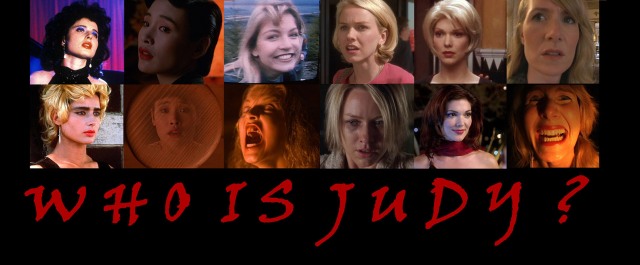
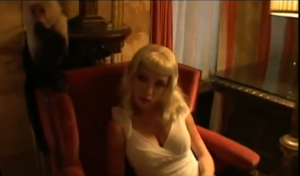
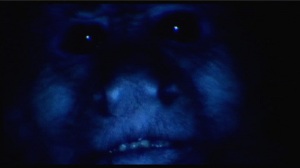
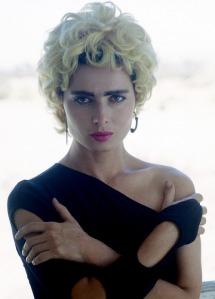
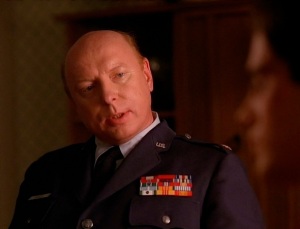
Great post. As with anything Lynch-related, I suspect all the connections are subconscious but they’re still there. This reminds me a bit of John Thorne’s excellent article on Judy: http://abovethestore.blogspot.com/2009/04/judy-judy-judy.html where he posits that perhaps it’s a sort of code name for Laura Palmer and/or the eternal female victim/martyr.
I would only add to your discussion the role Sheryl Lee played in evolving the character of Laura. Originally hired just to play a corpse, her role was expanded as Lynch was impressed with her charisma and then he took the risk of writing a whole film around her. There are multiple accounts of the impression Lee made on the rest of the cast and crew: they were really astonished by the depths she plumbed on set; some were even nervous she was undergoing a nervous breakdown. Lynch himself was clearly moved by her dedication to Laura and restructured the film around her dropping numerous other threads (including a lot of the Judy dialogue).
I think, at least on a subconscious level, Inland Empire is in part about what Lynch witnessed and facilitated on the set of FWWM. This impression is underscored by the poem and diary entry Lee shared in 2011: http://bullettmedia.com/article/character-study-sheryl-lee-writes-a-ghostly-ode-to-laura-palmer/ in which she speaks of Laura almost as an inhabiting spirit herself.
For a director so taken with the dark and light, beauty and ugliness, innocence and pain co-existing in female characters, this experience must have had an impact on him. I agree with you that Judy’s relevance – especially once Lynch threw in the monkey’s eerie reference (way after he had reshaped the movie) – is poetic rather than rational.
LikeLiked by 2 people
Thanks Joel! I will definitely have to research the Sheryl Lee element you brought up, I didn’t know about it, but I’m psyched to learn about it, and possibly address it in a future article.
LikeLike
Love that graphic btw. And really looking forward to reading more from this blog.
LikeLike
Wow, impressive – thanks for the interesting read.
Triggered by your article, I looked up the wikipedia article on Judy Garland, according to which she died at 47. And would like to add (from imdb’s storyline of Inland Empire): “A blonde actress is preparing for her biggest role yet, but when she finds herself falling for her co-star, she realizes that her life is beginning to mimic the fictional film that they’re shooting. Adding to her confusion is the revelation that the current film is a remake of a doomed Polish production, 47, which was never finished due to an unspeakable tragedy.”
Although I don’t think that David Lynch would get so literal as to reference to Judy Garland’s age of death by the number 47.
LikeLike
Superb article!
LikeLike
The concept of a character’s being parceled-out, or exposed in thematic installments over time, is intriguing and novel. Such a “character” would be consistent with Lynch’s other recurring elements, such as floors with zig-zag patterns, red curtains, flickering electric lights, monstrous personages, and the tension between darkness and light (in cinematographic and metaphysical senses).
LikeLiked by 1 person
… and flesh-colored lamps.
LikeLike
What on earth was “infamous” about Del Rio’s performance in Mulholland Drive? She was brilliant!
LikeLike
That is what I found worthy of infamy about it.
LikeLiked by 1 person